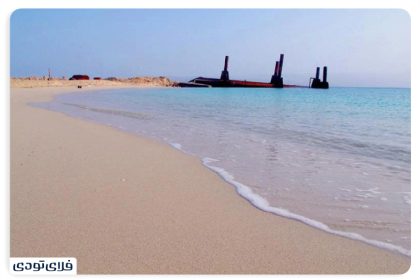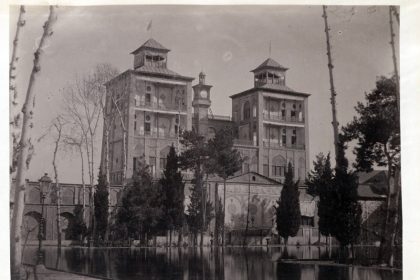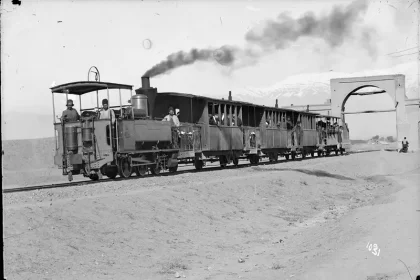It is said that only 5% of the works in the vaults of Dafineh Museums Group (affiliated to Mustafafan Foundation) have been exhibited in the museum.
According to the development manager of Dafineh Museums Group (affiliated to Mustafafan Foundation), only 5% of the works in the group’s repositories have been exhibited in the museum.
Journalists from the field of cultural heritage visited the museums of the Dafine building. On the sidelines of this visit, a meeting was held with the museum directors and the development manager of the Dafine museum group.
In this meeting, Mohsen Kouni, the development manager of Dafineh Museums Group, said:
Apart from the museums that we currently have in Tehran, Ramsar, Yazd and Isfahan, the establishment of other museums is also in the process of being launched or feasibility. For example, we have planned the Museum of Tar and Weft or handwovens of the Iranian desert as a complement to the Museum of Light and Light in Yazd. Its implementation processes have started. We will do our best to make it operational this year.
He added:
We have entered the less privileged cities to create a museum. For example, Mr. Fazel Nazari has recently talked with the governor of Khuzestan about the creation of a museum in Ahvaz, so that if there is a proposed building, they will inform the group of Dafineh museums.
Creating a museum in Shiraz with the theme of culture and art
Law stated:
In Mazandaran province and Ramsar city, we have the old hotel project, which is in the restoration stage and will be opened by 1403. In the city of Shiraz, we are investigating the possibility of establishing a museum of culture and art in cooperation with Shiraz municipality. In the city of Birjand, South Khorasan province, one of the museum spaces will be added to the Dafine museum group.
It will be possible to open a carpet museum in Tabriz. We will go to them depending on when the obstacles to setting up the museums are removed. Therefore, this year and next year we will open a number of museums.
This restorer said:
When Isfahan National Art Museum was launched; It was thought that the museum per capita of this city is good because it has a lot of potential, but we found out that this is not the case and this city does not have many museums. There are many historical places in the city of Shiraz, but a standard museum; We don’t have it and the people of Shiraz are also aware of it. It is the same in Tabriz. According to the world registration of the city of Tabriz, the cultural heritage administration has promised to create a museum, but the Tabriz carpet museum has not yet been created.
He added:
According to the investigations, we found out that Bagh Akbariyeh mansion in Birjand city is not in a favorable condition in terms of building maintenance. Maybe because the cultural heritage has many buildings and it is not possible to maintain all of them. While this garden has been registered globally, we reached this conclusion, in cooperation with the Ministry of Cultural Heritage, this building should be given to the foundation to invest in and create the first Iranian garden museum campus in Akbariyeh.
This restorer added:
Maybe less than 5% of the works of our repositories have been displayed, the rest of the works are in the repositories. One of our goals is that the works come out of the vaults and are displayed according to their type and museums.
Kouni also said about the process of authenticating the works:
We have an authentication working group in Dafineh Museum Group, all the objects that enter the museums, whether they have been identified before or not; All go through the authentication process.
This authentication process starts with receiving the opinion of expert experts and goes through various methods to finally make sure that the work is original, so non-original works are not exhibited in the foundation’s museums.
He added:
About the rest of the works we doubt the processes can continue to lead to the result. For example, we had a collection of paintings by Kamal al-Mulk, which were known by experts as Kamal al-Mulk’s paintings, but according to additional parameters and various studies and experiments, we realized that these paintings belong to the school of Kamal al-Mulk and not the master’s own works.
These reviews are marked on digital images and are still being studied. For example, studies have shown that they used imported canvases, while we did not have imported canvases during the period of Kamal al-Mulk. Our colleagues are studying to know from which country or factory these canvases were imported. These studies are also done on other objects.
Kouni said about the fact that in the past years the restoration of some cars in the historical car museum was criticized and how can we be sure that the rest of the works will not be restored in the form of these cars:
In my opinion, what happened in the car museum and the criticisms it received was a news propaganda. We should know that the method of restoring a machine work that has not been taken care of for years is very different from the method of restoring a pottery. I understand the sensitivities of car owners, but the restoration of a technological object is similar to what happened.
He added:
Tampering with historical monuments is completely different from what you think. Some cars had differences in periods that were removed from their original originality. The color of the car has not changed, maybe it has not returned to its original state. At that time, these points should have been explained well, what process each of these cars went through.
We may not be able to carry out some modern restorations in the country due to limitations, including technological limitations, and implement any idea we want because there are no facilities in Iran, but we will try to restore museum objects with all our might. Besides, in the last few years, elite and skilled forces have been helped and recruited in this sector.
Kouni noted:
We have professionally attracted 15 to 20 professional restorers in these years. This is a rare event in the country that can attract experts and young elites of the country to an institution in a limited period of time.
He said:
We have nearly several hundred thousand historical objects in our treasures. No structure or group can claim to display everything in the treasure, but inventory and maintenance of works and display of key works are done. The level of our success in this field is being checked while this path has just started and in the last 5 years, the view of museology in the foundation has been very different compared to before. During this period, a more serious transformation took place. Because the foundation started holding a museum in 1974, but in the last few years, a large number of museums were added to its collections.
RCO NEWS
















